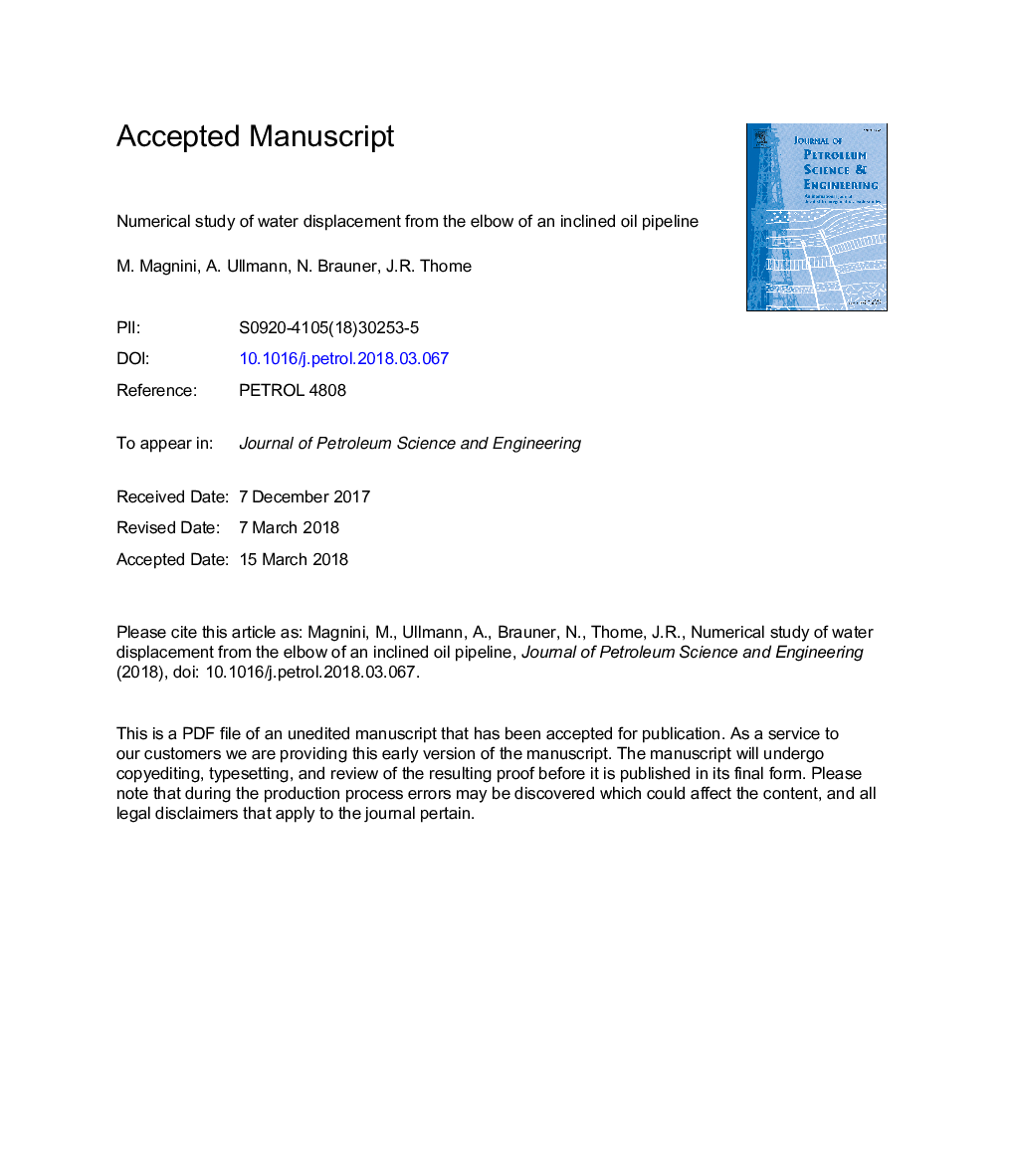| کد مقاله | کد نشریه | سال انتشار | مقاله انگلیسی | نسخه تمام متن |
|---|---|---|---|---|
| 8125056 | 1522775 | 2018 | 73 صفحه PDF | دانلود رایگان |
عنوان انگلیسی مقاله ISI
Numerical study of water displacement from the elbow of an inclined oil pipeline
ترجمه فارسی عنوان
مطالعه عددی جابجایی آب از آرنج خط لوله نفت خرد شده
دانلود مقاله + سفارش ترجمه
دانلود مقاله ISI انگلیسی
رایگان برای ایرانیان
کلمات کلیدی
جریان نفت و آب، جابجایی آب، رانش شارژ، حجم مایع چسبندگی دیوار،
موضوعات مرتبط
مهندسی و علوم پایه
علوم زمین و سیارات
زمین شناسی اقتصادی
چکیده انگلیسی
When oil and water are simultaneously transported along a hilly-terrain pipeline, water may accumulate at low level sections during production shutdown. Since the contact of water with the internal wall of a steel pipe yields significant corrosion, it is desirable for the water accumulated to be flushed out by the flowing oil. As such, the underlying two-phase flow dynamics and its influential parameters, as well as the minimal flow rate of the continuous phase required for the displacement of the accumulated water, are of primary industrial interest. This work presents a numerical investigation of the conditions governing and promoting water displacement at the elbow between a horizontal and an upward inclined pipeline, considering diesel oil as the carrier phase, and an inside pipe diameter of 27â¯mm. The numerical framework adopted is the opensource CFD package OpenFOAM release 2.3.1, and two-phase flow transient simulations are run by employing the built-in Volume Of Fluid (VOF) algorithm. Due to the complex three-dimensional nature of the oil-water interface evolution and of the contact line dynamics at the wall, 3D numerical simulations are performed. The numerical model is first validated by comparison with existing experimental results taken from the open literature. Then, the effects of the oil velocity, wall-wetting conditions and accumulated water volume on the flow patterns and on the water withdrawal performance of the oil flow are examined in detail. It is observed that the contact angle formed between the oil-water interface and the wall has a fundamental impact on the flow pattern. The trapped water mass spreads over the bottom surface of the pipe for hydrophilic wall conditions, while it forms a compact lump when in contact with hydrophobic walls. Hydrophobic walls promote water displacement from the elbow at lower oil flow rates due to a reduction of the oil cross-sectional area. The minimal oil velocity necessary for the onset of water displacement decreases as the trapped volume increases. The water front velocity increases linearly with the oil superficial velocity. A model for predicting the drift velocity of the water along the upward inclined pipe is proposed. This incorporates the effects of the superficial oil velocity, properties of the fluids, size and inclination of the pipe, and contact angle.
ناشر
Database: Elsevier - ScienceDirect (ساینس دایرکت)
Journal: Journal of Petroleum Science and Engineering - Volume 166, July 2018, Pages 1000-1017
Journal: Journal of Petroleum Science and Engineering - Volume 166, July 2018, Pages 1000-1017
نویسندگان
M. Magnini, A. Ullmann, N. Brauner, J.R. Thome,
